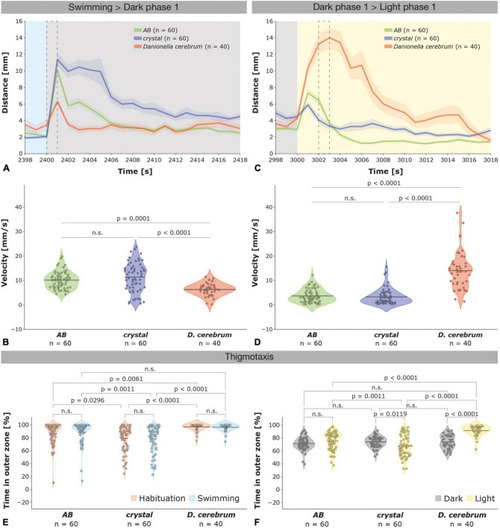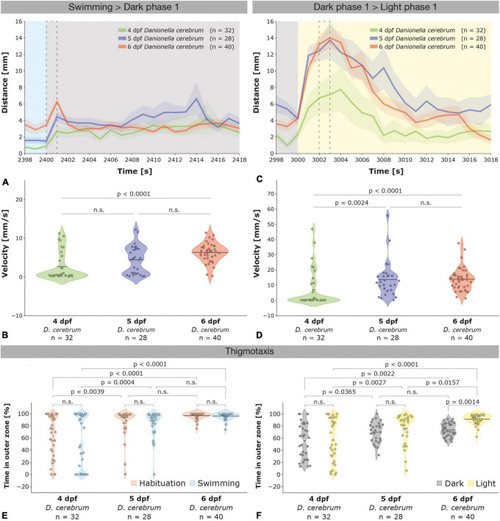- Title
-
A comparative analysis of Danionella cerebrum and zebrafish (Danio rerio) larval locomotor activity in a light-dark test
- Authors
- Lindemann, N., Kalix, L., Possiel, J., Stasch, R., Kusian, T., Köster, R.W., von Trotha, J.W.
- Source
- Full text @ Front. Behav. Neurosci.
|
Locomotor activity of 6 dpf zebrafish and |
|
Different startle responses evoked by illumination changes in zebrafish and |
|
Locomotor activity of 4–6 dpf |
|
Age-dependent startle responses evoked by illumination changes and thigmotaxis in 4–6 dpf |




